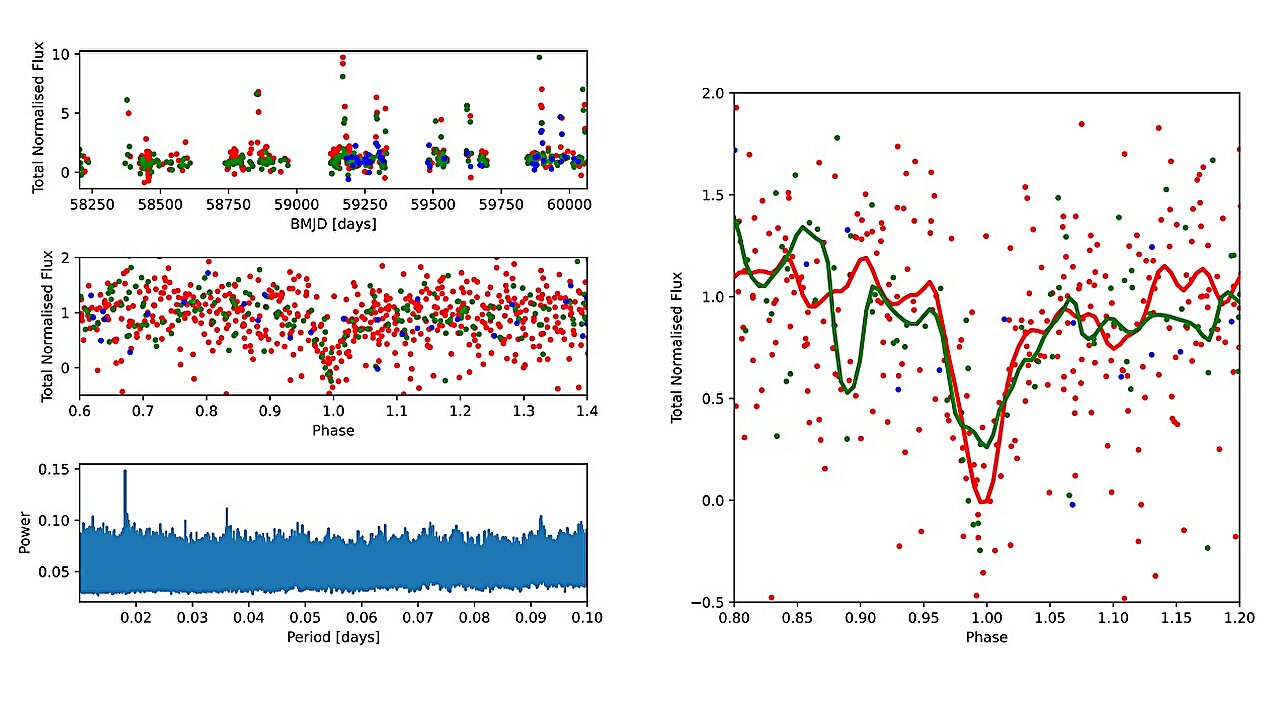By investigating dwarf novae identified by the binaries.html” target=”_blank” style=”color:orange” rel=”noopener”>Zwicky Transient Facility (ZTF), astronomers have discovered four binary systems. The objects turned out to be eclipsing accreting ultracompact white dwarf binaries. The finding was reported in a paper published December 15 on the pre-print server arXiv.
Now, a team of astronomers led by Jasmine M. Khalil of the University of Amsterdam, The Netherlands, reports the detection of new systems of this type. Khalil’s team combed through the list of more than 4,000 dwarf novae obtained with ZTF. As a result, they identified four eclipsing accreting ultracompact binaries, out of which one turned out to be reported by previous studies.
“We found four new eclipsing accreting ultracompact binaries with orbital periods between 25.9–56 minutes, one of which is previously published as an AM CVn [AM Canum Venaticorum-type star], while the other three systems are new discoveries,” the researchers wrote in the paper.
The binaries identified by the astronomers are designated ZTF20aabowdt, ZTF18acgmwpt, ZTF19abugzba and ZTF21abbxnbm. ZTF18acgmwpt, located some 5,300 light years away, was first reported in 2021 and confirmed as an AM CV system with helium absorption lines in its spectrum.
As noted in the paper, the four binaries have orbital periods between 25.92 and 56.16 minutes. In general, accreting ultracompact binaries have orbital periods below 65 minutes, what means that their orbital evolution is governed by gravitational wave radiation.
2023-12-31 12:00:04
Source from phys.org
